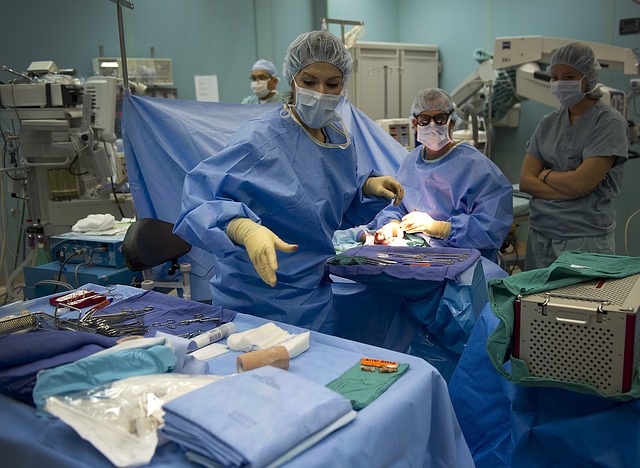All about Lung Transplant
If you have had an injury or illness to your lungs and nothing else has helped, this operation may be your only option. Possibilities include being rejected and becoming sick. Many individuals are back to living comfortably within three to six months.
What Kind Of People Qualify For Lung Transplants?
Some people with irreversible respiratory failure may be candidates for a lung transplant. A lung transplant may be necessary due to any number of lung diseases. Idiopathic pulmonary fibrosis (IPF), cystic fibrosis (CF), copd, and pulmonary hypertension are common underlying conditions. If your doctor does not think you will make it through a lung transplant, you will not get one.
Reasons Why a Lung Transplant May Not Be the Best Choice
Many people would benefit significantly from a lung transplant, but the procedure is not without its risks. Primarily, the drawbacks include:
- Lung transplant surgery might take anywhere from six to eight hours.
- There is a risk that your organs may get stressed during surgery.
- After treatment, you will need to take immunosuppressant drugs, which come with risks.
- As a result, some patients have mental health issues.
A New Set of Lungs: At the Outset of the Operation
The typical wait time for a single lung transplant is around two years; for two lungs, it may be as long as three years. Lung transplants from live donors are an option for those who cannot wait that long.
Transplant teams do evaluations because of the breadth and depth of data required to establish transplant eligibility. Among the members of this group are a transplant surgeon, a transplant pulmonologist (a doctor who specializes in the care of the lungs), one or more transplant nurses, a social worker, and a psychiatrist or psychologist. A dietitian, spiritual advisor, and anaesthesiologist are all possible additions to the team. The assessment of a transplant includes, but is not limited to, the following elements:
Stress, money worries, and emotional and social support from loved ones are only some of the psychological and social concerns evaluated before undergoing an organ transplant. These factors may jeopardize the success of a transplant.
Blood testing: Blood tests help find a compatible donor and increase the likelihood that the recipient’s immune system will not reject the organ.
Diagnostic procedures: Diagnostic procedures may be used to evaluate your lungs and general health. Radiographs, ultrasounds, computed tomography (CT) scans, pulmonary function tests, lung biopsies, and dental checks may all be part of the battery of diagnostics. Mammography, gynaecological exam, and Pap smear may be offered to female patients.
Some vaccines will be given to reduce the risk of contracting infections that may harm the transplanted lungs. Furthermore, lung transplant candidates who smoke must abstain from nicotine for some time before being listed for a transplant.
Your candidacy for a lung transplant will be determined after the transplant team has reviewed your medical history, conducted a physical examination, and analyzed any diagnostic testing results.
You will be added to the UNOS waiting list if you qualify for a transplant. When a lung becomes available from a donor, the recipient is chosen according to their blood type, location (how far they live from the donor), and lung allocation score. The weight given to this factor is determined by the degree of medical urgency rather than the patient’s wait time. You will get a call and be instructed to go to the hospital immediately to begin preoperative preparations for the transplant.
Transplanting a healthy chronic obstructive from a live donor might be scheduled in advance. All prospective donors must be in excellent health and have a blood type compatible with the recipient. A psychiatric evaluation will be performed to ensure the donor feels at ease with the choice.
An Explanation of What Goes Into A Lung Transplant
A vein in your arm or hand will be used to place an intravenous (IV) line, allowing your healthcare professional to administer the medication directly into your vein. You will be asleep and completely pain-free throughout the lung transplant thanks to the aesthetic injected into your veins via the IV. With the use of an electrocardiogram, they will keep an eye on your heart rate and blood pressure (EKG).
The kind of lung transplant you need may determine where on the operation table you lie. You may lay on your either back or side for a single-lung transplant. You must apply on your back for a double lung or heart-lung transplant.
Medical staff will hook you up to a mechanical ventilator when you’re out cold. To help you breathe, a machine has been created. They will also place a catheter in your bladder to drain urine. If you have to urinate during the surgery, the catheter will be there to catch it.
As a result, you may need ECMO (extracorporeal membrane oxygenation) equipment for your surgery (extracorporeal membrane oxygenation). With an ECMO machine, your transplant surgeon may avoid damaging your heart and lungs by diverting blood elsewhere. Blood is pumped through your body. It helps maintain healthy tissue by flushing out harmful carbon dioxide and replacing it with oxygen. Your medical staff may need to shave your chest in preparation. They will use an antiseptic to clean your skin and eliminate any germs.
Conclusion
Artificial lung transplant is a life-altering choice. Your healthcare practitioner’s responsibility is to help you feel at ease with your decisions.






